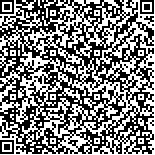| 引用本文: |
王明韵, 刘祎, 杨漾, 田朋, 李静, 匡慧芳, 董靓, 张秋雁.基于NPNT/JAK2/STAT3信号通路探讨血府逐瘀汤促冠心病血瘀证模型大鼠心肌修复的作用机制[J].湖南中医药大学学报,2025,45(1):6-14[点击复制] |
|
| |
|
|
| 本文已被:浏览 1623次 下载 1231次 |
| 基于NPNT/JAK2/STAT3信号通路探讨血府逐瘀汤促冠心病血瘀证模型大鼠心肌修复的作用机制 |
| 王明韵,刘祎,杨漾,田朋,李静,匡慧芳,董靓,张秋雁 |
| (湖南中医药大学, 湖南 长沙 410208) |
| 摘要: |
| 目的 基于肾连蛋白(NPNT)/Janus激酶2(JAK2)/信号转导及转录激活因子3(STAT3)信号通路探讨血府逐瘀汤促冠心病血瘀证模型大鼠心肌修复的作用机制。方法 通过结扎大鼠冠状动脉左前降支建立冠心病血瘀证模型,造模成功后将大鼠随机分为模型组(灌胃等量蒸馏水)、曲美他嗪组[灌胃5.4 mg/(kg·d)曲美他嗪溶液]和低、中、高剂量组[分别灌胃3.51、7.02、14.04 g/(kg·d)血府逐瘀汤药液]。另设正常组(无任何干预措施)、假手术组(冠状动脉左前降支只穿线不结扎),均灌胃等量蒸馏水。每组5只,均连续灌胃给药7 d后处死取材。超声心动图检测大鼠心功能指标;血液流变学检测全血黏度、卡松黏度和红细胞聚集指数含量;HE染色法观察心肌组织形态学变化;ELISA法检测血清血小板衍生生长因子-BB(PDGF-BB)、胰岛素样生长因子-1(IGF-1)和心肌组织血管内皮生长因子(VEGF)、血管内皮细胞生长因子受体-1(VEGFR-1)的表达;Western blot法检测心肌组织JAK2、p-JAK2、STAT3、p-STAT3蛋白的表达;实时荧光定量PCR检测心肌组织NPNT、JAK2、STAT3的mRNA表达。结果 与假手术组比较,模型组大鼠的心电图ST段明显抬高;左室射血分数(LVEF)、左室轴缩短率(LVFS)降低(P<0.01),左心室舒张末期内径(LVIDd)、左心室收缩末期内径(LVIDs)升高(P<0.01);全血黏度(低、中、高切)、卡松黏度、红细胞聚集指数均升高(P<0.01);心肌细胞肿胀、断裂、排列紊乱,出现大量炎性细胞;PDGF-BB、IGF-1、VEGF、VEGFR-1含量均升高(P<0.01);p-JAK2、p-STAT3蛋白表达增加(P<0.01);JAK2、STAT3、NPNT的mRNA表达水平均升高(P<0.01)。与模型组比较,各治疗组的心电图ST段出现不同程度下降;曲美他嗪组、中剂量组和高剂量组LVEF、LVFS升高(P<0.01),LVIDd、LVIDs降低(P<0.01),低剂量组LVIDd降低(P<0.05);曲美他嗪组、中剂量组和高剂量组的全血黏度(低、中、高切)、卡松黏度、红细胞聚集指数均降低(P<0.01,P<0.05),低剂量组全血黏度(低切)和卡松黏度降低(P<0.01,P<0.05);各治疗组的心肌细胞形态结构出现不同程度的改善;曲美他嗪组、中剂量组、高剂量组PDGF-BB、IGF-1、VEGF、VEGFR-1含量均升高(P<0.01,P<0.05),低剂量组IGF-1、VEGF含量升高(P<0.01,P<0.05);各治疗组p-JAK2、p-STAT3蛋白表达均增加(P<0.01,P<0.05);曲美他嗪组、中剂量组、高剂量组NPNT、JAK2、STAT3的m RNA表达水平均升高(P<0.01)。结论 血府逐瘀汤能显著改善冠心病血瘀证模型大鼠的心肌损伤,其机制可能与调控NPNT/JAK2/STAT3信号通路,促进血管新生有关。 |
| 关键词: 冠心病 血瘀证 血府逐瘀汤 NPNT/JAK2/STAT3信号通路 心肌修复 |
| DOI:10.3969/j.issn.1674-070X.2025.01.002 |
| 投稿时间:2024-07-01 |
| 基金项目:湖南省自然科学基金项目(2024JJ8167);湖南中医药大学2022年度学科建设揭榜挂帅项目(22JBZ005);2023年湖南省研究生科研创新项目(CX20230796);湖南中医药大学2023年“一方”研究生创新项目(2023YF07)。 |
|
| Mechanism of action of Xuefu Zhuyu Decoction in promoting myocardial repair in a rat model of coronary heart disease with blood stasis pattern based on the NPNT/JAK2/STAT3 signaling pathway |
| WANG Mingyun, LIU Yi, YANG Yang, TIAN Peng, LI Jing, KUANG Huifang, DONG Jing, ZHANG Qiuyan |
| (Hunan University of Chinese Medicine, Changsha, Hunan 410208, China) |
| Abstract: |
| Objective To explore the mechanism of action of Xuefu Zhuyu Decoction(XFZYD) in promoting myocardial repair in a rat model of coronary heart disease with blood stasis pattern based on the NPNT/Janus kinase 2(JAK2)/signal transducer and activator of transcription 3(STAT3) signaling pathway. Methods A rat model of coronary heart disease with blood stasis pattern was established by ligating the left anterior descending branch of the coronary artery. After successful modeling, the rats were randomized into model group(intragastric administration of an equal volume of distilled water), trimetazidine group[intragastric administration of 5.4 mg/(kg·d) trimetazidine solution], and low-, medium-, and high-dose XFZYD groups(intragastric administration of 3.51, 7.02, and 14.04 g/(kg·d) of XFZYD solution, respectively). Additionally, a normal group(no intervention measures) and a sham-operated group(the left anterior descending coronary artery was only threaded but not ligated) were established, and both groups were administered an equal volume of distilled water by gavage. Five rats were in each group, and all were euthanized for tissue collection after seven days of continuous gavage administration. Echocardiography was performed to measure the rat cardiac function indicators; Hemorheological tests were conducted to determine the whole blood viscosity, Casson viscosity, and red blood cell aggregation index; HE staining was used to observe the morphological changes in myocardial tissue;ELISA was employed to measure the expressions of serum platelet-derived growth factor-BB(PDGF-BB), insulin-like growth factor-1(IGF-1), myocardial tissue vascular endothelial growth factor(VEGF), and vascular endothelial cell growth factor receptor-1(VEGFR-1); Western blot was used to examine the protein expressions of JAK2, p-JAK2, STAT3, and p-STAT3 in myocardial tissue; real-time fluorescence quantitative PCR was performed to check the mRNA expressions of NPNT, JAK2, and STAT3 in myocardial tissue.Results Compared with the sham-operated group, the model group showed significant ST-segment elevation on electrocardiogram, lower left ventricular ejection fraction(LVEF) and left ventricular fractional shortening(LVFS)(P<0.01), higher left ventricular end-diastolic diameter(LVIDd) and left ventricular end-systolic diameter(LVIDs)(P<0.01), elevated whole blood viscosity(low, medium, and high shear rates), Casson viscosity, and red blood cell aggregation index all(P<0.01), swollen, fractured, and disordered myocardial cells with numerous inflammatory cells, higher levels of PDGF-BB, IGF-1, VEGF, and VEGFR-1(P<0.01), elevated protein expressions of p-JAK2 and p-STAT3(P<0.01), and higher mRNA expression levels of JAK2, STAT3, and NPNT(P<0.01). Compared with the control group, the treatment groups showed varying degrees of ST-segment reduction on electrocardiogram. The trimetazidine group,medium-dose XFZYD group, and high-dose XFZYD group showed higher LVEF and LVFS(P<0.01), and lower LVIDd and LVIDs(P<0.01), while the low-dose XFZYD group showed reduced LVIDd(P<0.05). The trimetazidine group, medium-dose XFZYD group,and high-dose XFZYD group showed lower whole blood viscosity(low, medium, and high shear rates)(P<0.01, P<0.05), while the low-dose XFZYD group showed reduced whole blood viscosity(low shear) and Casson viscosity(P<0.01, P<0.05). The myocardial cell morphology and structure were improved to varying degrees in all treatment groups. The trimetazidine group, medium-dose XFZYD group, and high-dose XFZYD group showed higher levels of PDGF-BB, IGF-1, VEGF, and VEGFR-1(P<0.01, P<0.05), while the low-dose XFZYD group showed higher levels of IGF-1 and VEGF(P<0.01, P<0.05). All treatment groups showed elevated protein expressions of p-JAK2 and p-STAT3(P<0.01, P<0.05). The trimetazidine group, medium-dose XFZYD group, and high-dose XFZYD group showed higher mRNA expression levels of NPNT, JAK2, and STAT3(P<0.01). Conclusion XFZYD can significantly reduce myocardial injury in a rat model of coronary heart disease with blood stasis pattern. Its mechanism may be related to the regulation of the NPNT/JAK2/STAT3 signaling pathway and promotion of angiogenesis. |
| Key words: coronary heart disease blood stasis pattern Xuefu Zhuyu Decoction NPNT/JAK2/STAT3 signaling pathway myocardial repair |
|

二维码(扫一下试试看!) |
|
|
|
|




